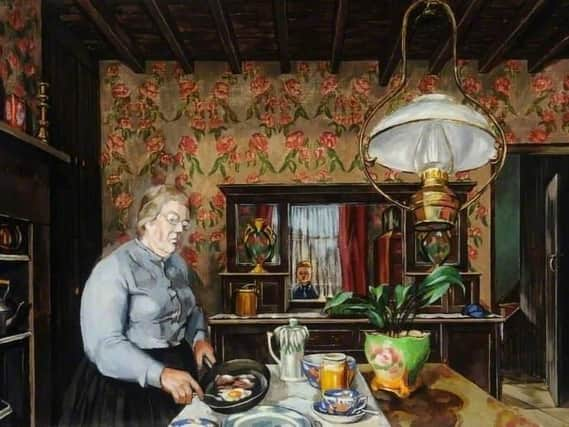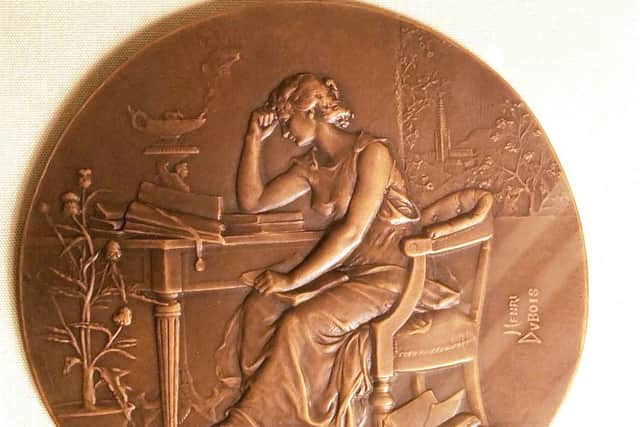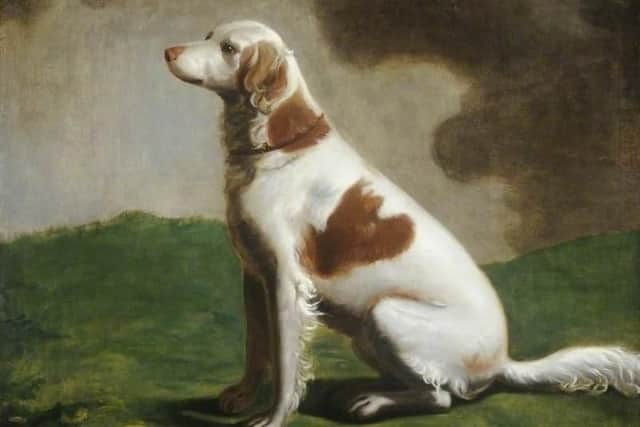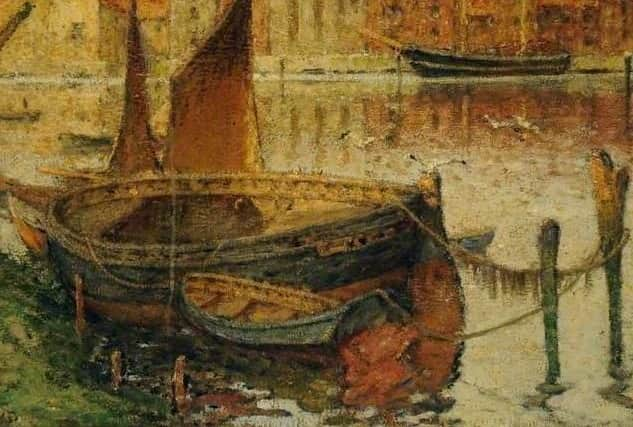Borough connections to wonderful world of art


Doncaster Museum & Art Gallery's Connections exhibition '“ a unique exhibition featuring art and museum collections held by Heritage Doncaster.
Through a series of links '“ some obvious, some surprising, and some downright silly '“ the exhibition makes connections between around 70 artworks, beginning with the first work to enter Heritage Doncaster's art collection, Sir Frank Lockwood's A Moment of Triumph.


Advertisement
Hide AdAdvertisement
Hide AdSir Frank Lockwood (1846'“1897) was a lawyer and Liberal MP for York from 1885 '“ 1897. In his spare time he also drew political cartoons, one of which is featured in the exhibition.
Lockwood was born in Doncaster to Charles Day Lockwood. Charles brings us to our next connection '“ the hamlet of Levitt Hagg where he worked as a stone quarrier.
Levitt Hagg was a small hamlet on the banks of the River Don near Conisbrough Castle. It began to grow from around 1815 when the company of Lockwood, Blagden and Kemp, who were limestone merchants, built six cottages. By the 1870s the population of the village was nearly 100.
During 1925, the County Medical Officer made a report on the sanitary conditions at Levitt Hagg. He found that many of the houses in the hamlet were in a state of disrepair and were prone to flooding whenever the river overflowed. The poor conditions and badly polluted state of the river led to all the Levitt Hagg houses being condemned as unfit for occupation, and by 1957 the area had been cleared.


Advertisement
Hide AdAdvertisement
Hide AdThe painting of Levitt Hagg on display in the exhibition was created by Eric Platt.
Eric was born on May 2, 1915 at Cudworth near Barnsley. There was already a history of artists and craftsmen within the family since his paternal grandfather was an amateur painter and master decorator and his maternal grandfather was an amateur portrait painter. Eric's family settled in Doncaster in 1927 and bought a confectionery business in Cleveland Street.
Eric's education was at St George's Church School in St George Gate where headmaster Harry North encouraged him with his artistic studies and was instrumental in obtaining a place for him at Doncaster School of Art, above the old Library in St George Gate.
He went on to become only the third Doncaster student to pass the entrance exam to the Royal College of Art and studied in the engraving school under two of the most renowned etchers of the day, Robert Austin and Malcolm Osborne.


Advertisement
Hide AdAdvertisement
Hide AdAfter serving in the war, he returned to Doncaster in 1947 where he obtained a post at Doncaster School of Art, later becoming the head of the school for many years. It is this fact that links Eric Platt to the next painting in the exhibition - an image of Victorian life by George Edward Brumfitt, who also served as head of the art school in Doncaster.
Among other highlights of the exhibition are Bertram Priestman's powerful painting Kilnsey Crag, Wharfedale shown beneath a heavy sky, works by husband and wife Vladimir and Elizabeth Polunin, and a collection of art medals donated to Doncaster Museum by Anne Hull Grundy.
The exhibition also features some surprising works including Elizabeth Styring Nutt's painting The Derelict, High Tide, Whitby, which has rarely been on public display since it entered the museum's collection in 1941.
The exhibition also features some surprising works including Elizabeth Strying Nutt's painting The Derelict, High Tide, Whitby, which has rarely been on public display since it entered the museum's collection in 1941.
Advertisement
Hide AdAdvertisement
Hide AdStyring Nutt was a fascinating character. Born on the Isle of Man in 1870, she spent her early years in Sheffield, where she attended Sheffield_Hallam_University and Sheffield School of Art. After leaving Sheffield she completed her studies at the Newlyn School of Art.
Nutt began her teaching career at the Firs Hill Branch Art School, then at the Sheffield School of Art and the Sheffield Training College for Teachers.
In 1919 Nutt accepted the position of Principal at the Victoria School of Art and Design in Canada. She was to remain there until 1943, when she returned to Sheffield. Her painting is a good example of the sometimes quite random nature of the art collection cared for by Heritage Doncaster, which has grown over the past 100 years through a mixture of purchases, donations and bequests, and now numbers around 2,000 artworks.
So if you want to get connected to some great art visit Doncaster Museum & Art Gallery between now and Friday April 12.